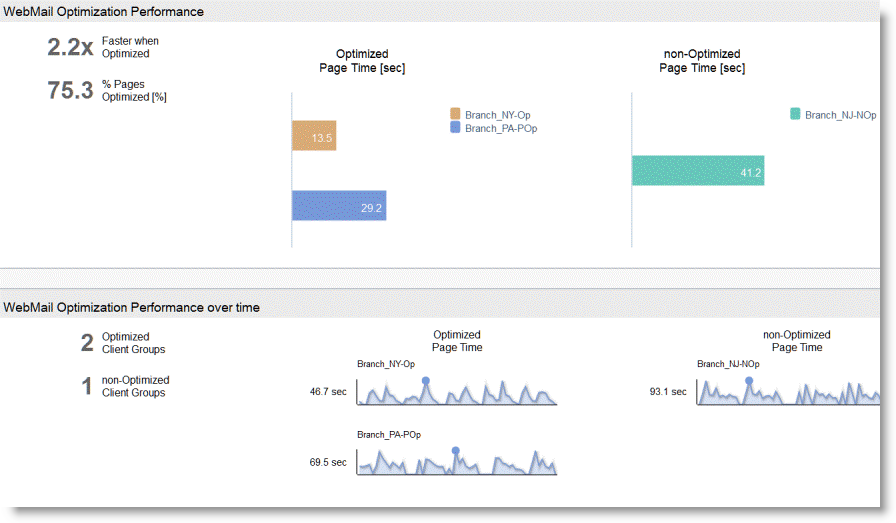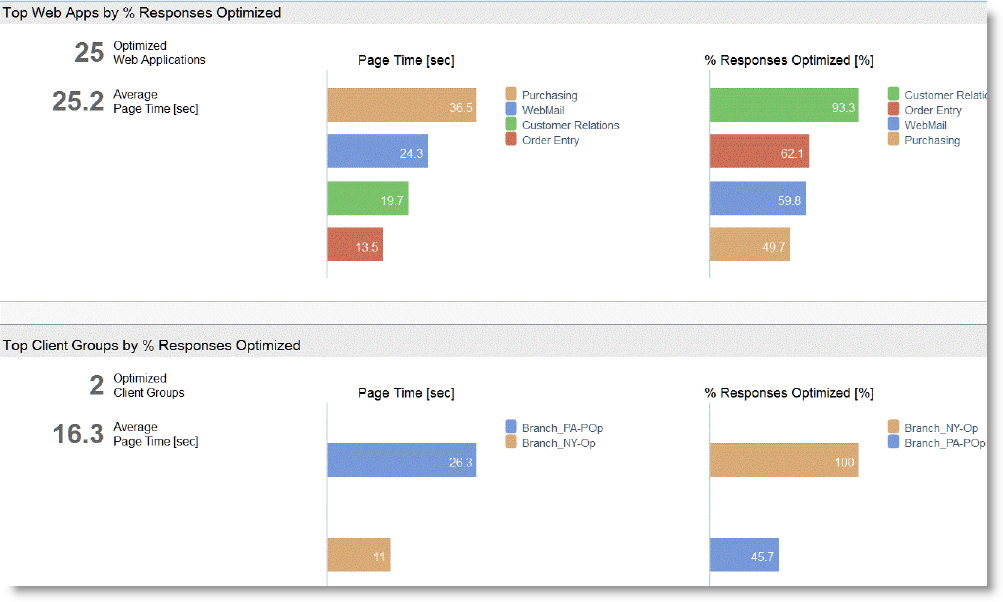Overview of SteelHead and AppResponse Integration
AppResponse provides real-time visibility of more than 60 TCP/IP metrics for each IP flow conversation between a client and server, using passive, IP flow-based monitoring. You typically deploy AppResponse in a data center and configure the appliance to use a network SPAN or tap that exposes it to IP traffic.
Prior to AppResponse v9.5, metrics from WAN-optimized network environments—such as SteelHead—were less reliable due to the acceleration and IP address translation that can occur when they pass through WAN-acceleration devices. AppResponse v9.5 or later communicates with SteelHeads running RiOS v9.0 or later that includes a Web Transaction Analysis (WTA) engine that provides extensive real-time monitoring and analysis of Web applications.
You can view detailed data on all page views observed: response times for individual pages and objects (broken down by server versus network delays), slow pages, optimized versus nonoptimized content, user counts, view rates, page views by geographic region, HTTP response codes, and so on. SteelHeads and AppResponse use the following process:
The SteelHead collects HTTP payload data and timestamps for the Web objects it optimizes.
The SteelHead transfers the data to AppResponse (called SteelFlow WTA) through the REST API.
The WTA process in AppResponse coalesces the data into page views and then calculates metrics.
AppResponse can identify:
the components of delay (network, server, client).the components that are accelerated.how well the components performed when rendered on the desktop device of the client. This unique capability enables network and application engineers to accurately identify what is the source of traffic congestion when a user is viewing Web pages at a data center or a cloud-hosted environment. Using AppResponse helps you to understand the positive impact the SteelHeads are having in their environment.
Figure 21‑1 shows, on two different AppResponse reports, how you can identify what remote sites are benefiting the most from optimization and what performance they are receiving on average (Choose Quick Views > My SteelHeads > Top Optimized vs non-Optimized Client Groups for my Web App, and then select an application.)
Figure 21‑1. Remote Site WebMail Performance

When you configure AppResponse and SteelHead to work together, you can extend the visibility of WTA from the data center to branch offices. You can evaluate the effects of SteelHead optimization of web pages between your data center and branch offices, and between branch offices and cloud servers. Specifically you can:
quantify end-user experience of your Web applications at branch offices.compare branch office Web application response times to each other.compare optimized branch office Web application response time to each other.compare end-user experience in nonoptimized branch offices to optimized ones.compare user experience over time. measure optimization performance for business-critical applications.monitor and evaluate the performance of SaaS applications such as Salesforce.com.quickly identify Web applications, pages, objects, sites, and users with high response times.break down HTTP response times into network versus application delays for specific pages, objects, and applications.tell how many users per site using this application (helps to find application adoption).tell what are the devices they are accessing application from (Windows, Mac).tell what are the browser type or versions.tell who are the top users.tell what are the slowest pages.tell what is the average user experience in terms of page load time.detect any bottlenecks/Figure 21‑2 shows the actual end-user response time on the average for applications that are being optimized, and who is benefiting the most from the optimization. (Choose Quick Views > My SteelHeads > Top Optimized Client Groups and Web Apps.)
Figure 21‑2. Optimization Benefit




